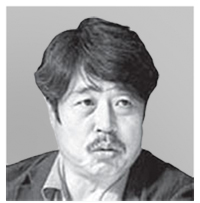More urgent matters

The author is a professor of business administration at Sookmyung Women’s University.
The minimum wage will go up from this year’s level by 10.9 percent to 8,350 won ($7.40) next year, according to a decision by the Minimum Wage Commission. The pace has been somewhat moderated from the goal of achieving a 10,000 won minimum wage by 2020 upon escalating concerns about the harmful repercussions from this year’s 16.4 percent hike. That was an imperfect compromise struck between companies and labor, which pleased neither amid the probability of inevitable social and economic costs. The hike nonetheless cannot be seen as moderate as the minimum wage has already increased by 1,880 won, including a 16.4 percent rise this year, since the liberal administration launched in May 2017.
The dispute over the increase is meaningless now that the pace has been set. What is more important is to revisit the design and principles of the wage system to get things right going forward. The Minimum Wage Act that went into effect from January 1988 was based on the 1987 Constitution. While the minimum wage is meant to guarantee a minimum payment for workers’ livings, the upper limit of wages hinges on the employer’s affordability.
If the wage floor reaches beyond an employer’s affordability, the company would have to close business or cut payroll. But if a company generates more profits and productivity than expected, it does not have to stick to the minimum wage because it is just a guideline. The minimum wage system needs to be revised regularly so that the wage guidance can play its rightful role and function. Wage levels also must change accordingly.
Since the minimum wage is a “reference” — not the “real” amount paid to employees — the reasoning behind setting the rate must be clear. Under the fourth article of the relevant act, a minimum wage should be set in consideration of the living costs of a worker, the pay of a worker in the same line of occupation, and labor productivity and income distribution rate. Regardless of questions about the demands of the law, formal compliance to the terms is necessary to uphold the law. Seen from that perspective, this year’s rate is disputable.
The Minimum Wage Commission said it determined next year’s rise by factoring in the expected 3.8 percent average gain in salaries for workers in similar lines of work, a 1 percent rise in the state subsidy for workers in compensation for the changes in the base wage scope, a 1.2 percent rate for changes in external environments, and a 4.9 percent rate for improvement in income distribution. The commission does not explain exactly how it came up with such figures. It also has not elaborated on how it arrived at the numbers related to the subsidy rise and external factors. The commission is suspected of unilaterally bending rules. If the law has room for dispute, it should be revised, not disregarded. The so-called external factors also raise questions.
It is hard to pin down an optimal minimum wage level. The social and economic effects of a legal minimum wage have both merits and demerits. It is not easy to reach consensus on the impact. But it is possible to judge its appropriateness by studying its ramifications on society. The wage floor has been lifted since the system was first employed in 1988. The rise was steeper under liberal governments and less steep under conservative ones. The decision triggered controversy every year, but the market nevertheless complied.
But the jumps since 2017 did not settle well. Our society has experienced unprecedented chaos since the government raised it by a whopping 16.4 percent for this year. The militant Korean Confederation of Trade Unions (KCTU) plus representatives from the employer side boycotted this year’s decision-making session for different reasons. Small merchants vowed to boycott the state-set wage level. The system has come under serious social challenge. Authorities should move fast to supplement the system by differentiating the wage level by industry and region or consider changing the law or policy. Without such a move, the controversy won’t die down.
The commission itself is in dispute. This year’s decision-making procedure has been particularly tumultuous. Representatives of employees walked out in protest of the commission’s move to widen the scope of the base wage by including bonuses and other regular benefits. Five members representing the bigger Federation of Korean Trade Unions returned to the meeting, but those from the more combative KCTU did not. Employer representatives bolted out when their demand for differentiating the wage according to industry was voted down. The final rate decision was made by 14 out of the 27 standing members. Such discord undermines acceptance of the decision.
The organization of the commission also needs to be revamped. Since the purpose of the institution is to decide the minimum base for pay, the parties with conflict of interests — employers and employees in this case — must not face one another. Instead, a wage commission should be led by proxy figures recommended by employees and employers instead of themselves. Members of the commission should regularly meet for discussion and research to find a reasonable grounds for wages. Moreover, the body should be freed from government and political influence. It would be best if the government is banned from naming a third of the 27-member commission to ensure neutrality.
Translation by the Korea JoongAng Daily staff.
JoongAng Ilbo, July 18, Page 29










with the Korea JoongAng Daily
To write comments, please log in to one of the accounts.
Standards Board Policy (0/250자)